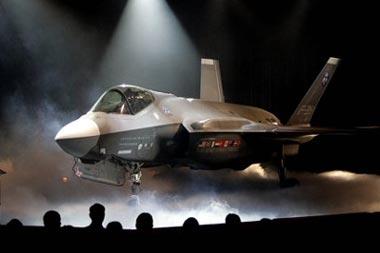Ten months after Chief Naval Officer Adm. Jonathan Greenert put a scare into the Joint Strike Fighter program with an editorial he wrote in a naval magazine, questions remain over the Navy's variant of the fifth generation fighter.
Greenert questioned the need for a naval stealth aircraft when considering the advances made in radar technology. He outlined those concerns in a piece he wrote for Proceedings magazine. Ten months have passed and the spotlight has shifted to the F-35 Joint Strike Fighter's future with the onslaught of budget cuts associated with sequestration.
The F-35 program chief put Lockheed Martin on notice publicly blasting the company's relationship with the F-35 program office back in September. Air Force Lt. Gen. Christopher Bogdan, who oversaw the Air Force's tanker program, called the relationship the "worst he's ever seen."
He has maintained the full court press when Bogdan said Lockheed Martin, the program's lead contractor, and Pratt & Whitney, maker of the jet's engine, is not properly partnering with the U.S. military and failing to "invest in cost reductions" that would prove to him that the companies hope to build the F-35 for the next 40 years.
The focus will return to the Navy's variant on April 10 at the Sea Air Space 2013 Symposium when Vice Adm. David Dunaway, the head of Naval Air Systems Command, leads a panel discussion on the future of the Joint Strike Fighter.
Service officials will likely discuss the recent report from the Government Accountability Office that questions the long term affordability of the program.
The program to build the fifth generation fighter will require an average of $12.6 billion through 2037, which the GAO called an "unprecedented demand on the defense procurement budget." As the Pentagon's budget flattens off in coming years, GAO investigators questioned whether the U.S. will be able to continue to support the most expensive military weapons program in U.S. history.
However, others found reasons for optimism from the report entitled "F-35 Joint Strike Fighter: Current Outlook is Improved, but Long Term Affordability is a Major Concern." GAO reported that the JSF hit seven out of 10 goals for 2012.
Loren Thompson, a defense analyst with the Lexington Institute in Washington, wrote recently that the GAO findings essentially came out to "a low B" for the program. Not stellar, but the longtime analyst concluded that the fact GAO issued the JSF program the "most positive assessment ever" indicates the plane is on track to provide the U.S. with continued air superiority for decades.
But as the Navy's F-35 program officials assess the Navy's future needs, defense analyst and author John Gresham says it's critical they ponder just how much they need the JSF variant.
The F-35C is designed with more stealth capability, Gresham said, and that means more maintenance hours between missions. The fact the plane will be living "out in salt water 24/7 for most of its life" will also mean longer maintenance times unique to that version.
Considering these issues -- along with smaller Defense Department budgets -- it only makes sense the Navy asks itself if there is an alternative to the "C" variant, Gresham said.
"If you have to kill [one model] which one would it be? It would have to be the carrier" version, he said.
Gresham says he is an advocate of the F-35, but believes the Navy can have a completely capable version by modifying the B-model that is now being tested by the Marine Corps. The F-35B has short takeoff/vertical landing capabilities negating the need for a large carrier deck, cable assembly and aircraft tailhook.
Greenert in March said not buying the F-35C would, in fact, seriously cripple the overall program, but left open the possibility of buying fewer, according to a Reuters report. The Navy plans to buy 260 planes, but with budgeting tight, "the question becomes how many do we buy, and how does it integrate into the air wing," Greenert said according to the Reuters report.
Gresham, looking ahead, said the F-35 program has followed many of the same ebbs and flows as other defense programs.
"I'm not worried about the program, per se. Could it have been run better? Yes. Could more have been done to reduce concurrency? Yes," he said.
But even with its past and future costs, Gresham expects the JSF to meet the needs of the three services. If the Navy were to consider adapting the B-model to its fleet, it would not only quicken the pace of getting the planes into service, but also increase the size of the Navy's carrier fleet because many more ships could accommodate them.
"I'm not trying to second guess NavAir, or the Chief of Naval Operations or the Department of the Navy, but being a naval analyst/observer since the early '80s, I've seen quite a few aircraft come and go," he said. "And let's not kid ourselves -- this is going to be the last generation of manned fighters."


























